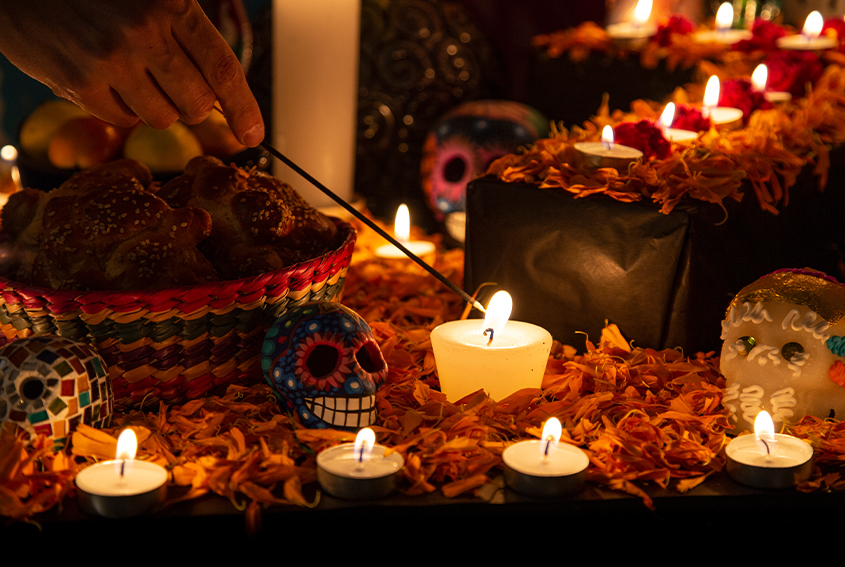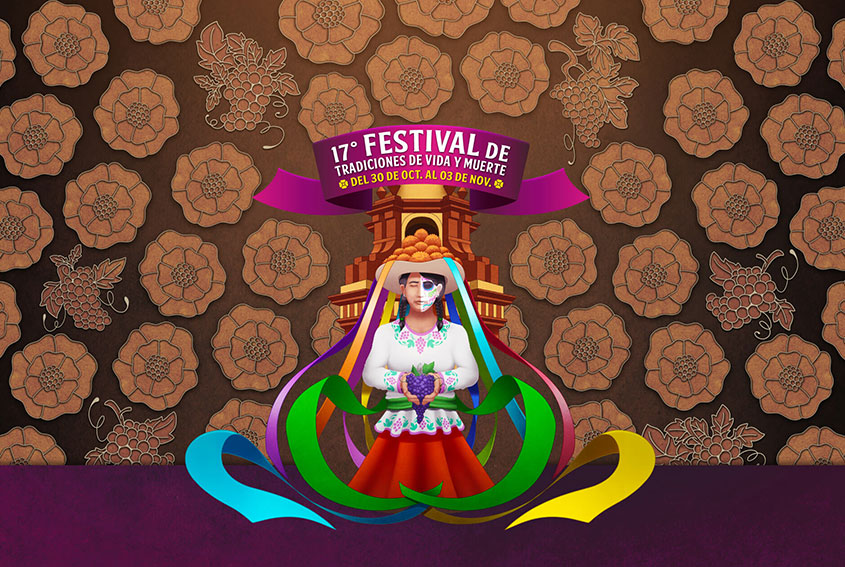Witnessing Day of the Dead Traditions

Towards the end of October, the spicy fragrance of copal incense wafts through the air and there is a whisper on the wind. You’ll notice cempasuchitl or orange marigolds, red cockscomb flowers, purple daisies, lilies and gypsophila everywhere with pan de muerto, candy skulls, candles and cut tissue paper as people begin to erect Dia de Muertos altars in honor of the departed. See these symbolic altars at Royal Resorts and in Cancun, Playa del Carmen and elsewhere in the Mexican Caribbean and Yucatan.
One of Mexico’s richest and most colorful traditions, Día de Muertos is observed on November 1 and 2. At this time of year, Mexicans believe that the souls of the dead come back to the world of the living for a short time. They welcome their loved ones with altars laden with flowers, food, treasured possessions, and other offerings, and with candlelit vigils, masses and serenades.

You may want to plan a visit to Xcaret from October 30 to November 3 for the Festival de Tradiciones de Vida y Muerte, a celebration of timeless Day of the Dead customs. The Festival program features processions, altars, traditional cuisine, art exhibits, music, dance, theater, children’s events and a visit to the colorful Mexican cemetery. Maya communities from Quintana Roo and Yucatan participate and this year, the central Mexican state of Queretaro is the special guest.
In Yucatan, the Day of the Dead is known as Hanal Pixan or “feast of the souls” and altars spring up in Valladolid, Izamal and in the state capital Merida, where Dia de Muertos events also include the huge Paseo de las Animas procession from the city cemetery.
Ask at the Thomas More Travel desk about Xcaret trips and the Festival de Tradiciones de Vida y Muerte. You can find the festival program here: https://www.festivaldevidaymuerte.com/en/
